Two ends of an inductor of inductance L is connected to two parallel conducting rails. A conducting wire of length (that is equal to separation between the rails) can slide on the rails without friction. The wire has mass m. It is projected with a velocity v0 parallel to the rails (see Figure). Neglect self inductance and resistance of the loop.
(a) Find velocity of the wire as a function of time.
(b) Write current through the wire at time t.
(c) Find speed of the wire as a function of its displacement.
(d) Is the current in the conductor zero when it stops? If no, find this current .
(e) Will the conductor move after it stops?
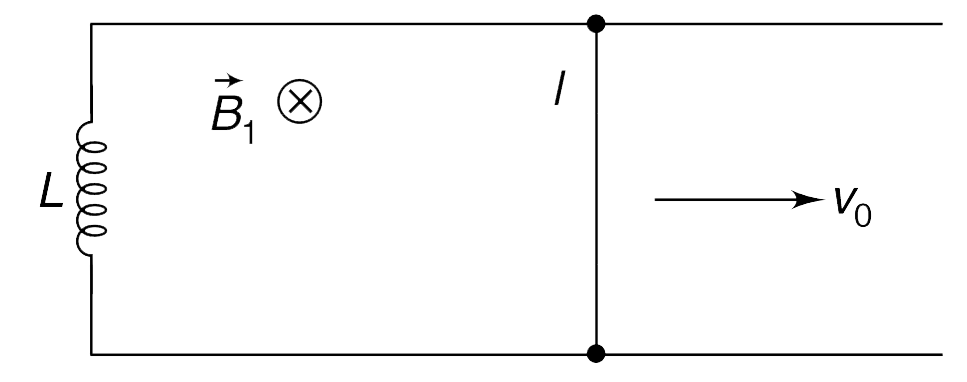
The correct Answer is:(a) v=v0cosωt
(b) i=v0√mLsinωt where ω=Bl√mL
(c) v=√v20−B2l2mLx2
(d) No, v0√mL
(e) Yes
Step by step video, text & image solution for Two ends of an inductor of inductance L is connected to two parallel conducting rails. A conducting wire of length (that is equal to separation between the rails) can slide on the rails without friction. The wire has mass m. It is projected with a velocity v_(0) parallel to the rails (see Figure). Neglect self inductance and resistance of the loop. (a) Find velocity of the wire as a function of time. (b) Write current through the wire at time t. (c) Find speed of the wire as a function of its displacement. (d) Is the current in the conductor zero when it stops? If no, find this current . (e) Will the conductor move after it stops? by Physics experts to help you in doubts & scoring excellent marks in Class 12 exams.
Topper's Solved these Questions
- BOOK - ARIHANTCHAPTER - ELECTROMAGNETIC INDUCTIONEXERCISE - Level 312videos
ELECTROMAGNETIC INDUCTION
- BOOK - ARIHANTCHAPTER - ELECTROMAGNETIC INDUCTIONEXERCISE - Level 312videos
ELECTROMAGNETIC INDUCTION
- BOOK - ARIHANTCHAPTER - CURRENT ELECTRICITYEXERCISE - Current Electricity105videos
CURRENT ELECTRICITY
- BOOK - ARIHANTCHAPTER - ELECTROSTATICSEXERCISE - Level 359videos
ELECTROSTATICS
Similar Questions
Figure shows a wire of resistance R sliding on two parallel, conducting fixed thick rails placed at a separation l. A magnetic fild B exist in a direction perpendicular to the plane of the rails. The wire is moving with a constant velocity v. Find current through the wire
 View Solution
View SolutionTwo parallel conducting rails are separated by a distance L. Two identical conducting wires are placed on the rails perpendicular to them. Each wire has mass M. One of the wires is given a velocity v0 parallel to the rails away from the other wire. There is a uniform magnetic field directed into the plane of the figure everywhere. Answer following questions for the system comprising of two wires. [Ignore friction and self inductance]
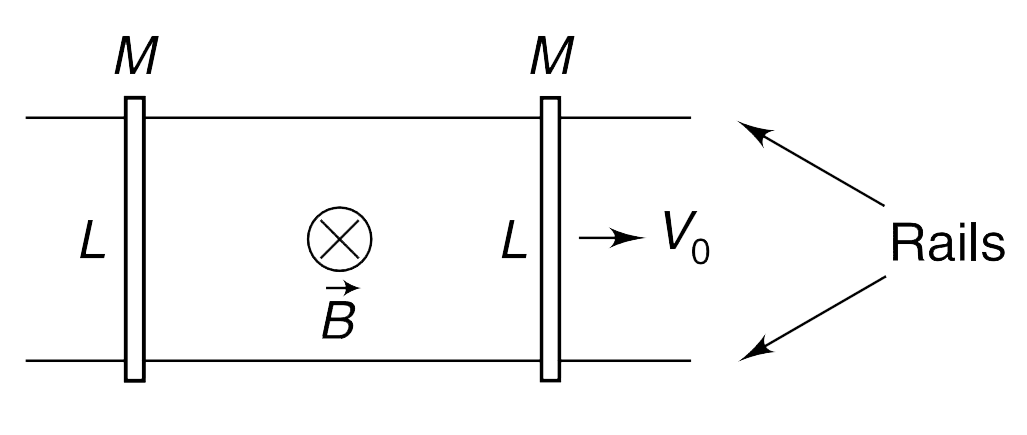
(i) Will the momentum of the system decrease with time?
(ii) What is kinetic energy of the system in steady state?View Solution
Knowledge Check
- Question 1 - Select One
Two ends of an inductor of inductance L are connected to two parallel conducting wires. A rod of length l and mass m is given velocity v0 as shown. The whole system is placed in perpendicular magnetic field B. Find the maximum current in the inductor. (Neglect gravity and friction)
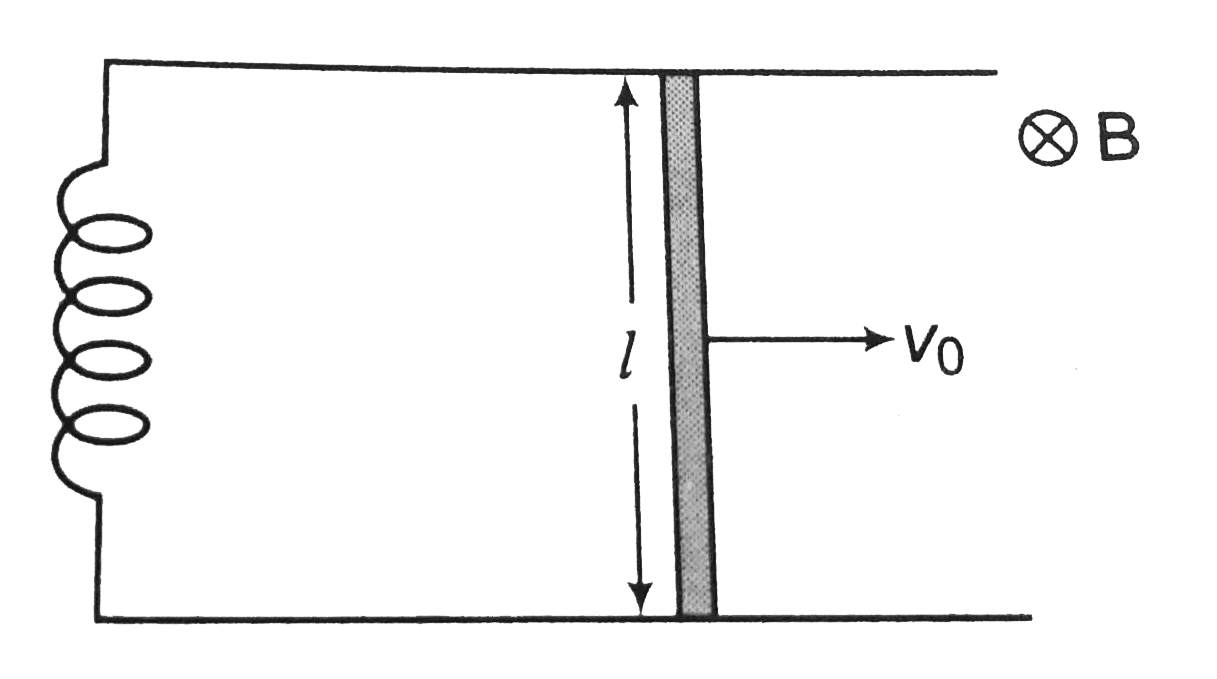 Amv0LB√mLv0Cmv20LDNone of these
Amv0LB√mLv0Cmv20LDNone of these - Question 2 - Select One
As shown in figure, the two parallel conducting rails, in a horizontal plane, are connected at one end by an inductor of inductance L. A slider (metallic) of mass m, is imparted a Velocity v0, upon the rails, as shown in figure. The period of oscillation of the conducting rod is
 Aπ2√mLBlB2π√mL3BlC2π√mLBlD3π√mL2Bl
Aπ2√mLBlB2π√mL3BlC2π√mLBlD3π√mL2Bl - Question 3 - Select One
A conducting rod PQ of mass m and length l is placed on two long parallel (smooth and conducting) rails connected to a capacitor as shown. The rod PQ is connected to a non conducting spring of spring constant k, which is initially in relaxed state. The entire arrangement is placed in a magnetic feild perpendicular to the plane of figure.
Neglect the resistance of the rails and rod.
Now, the rod is imparted a velocity v0 towards right, then acceleration of the rod as a function of its displacement x given by
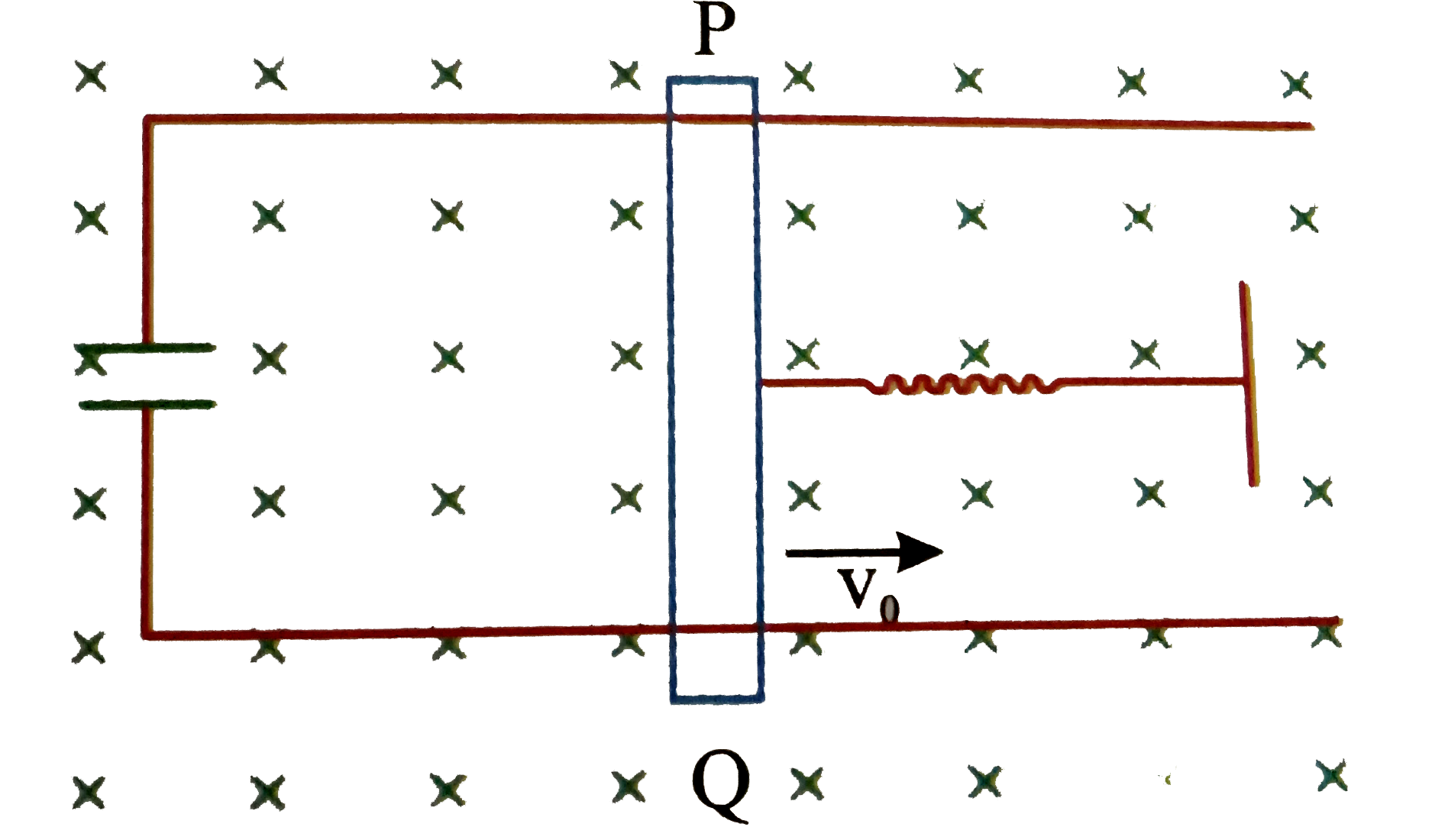 AkxmBkxm+B2l2CCkxm−B2l2CDkxB2l2C
AkxmBkxm+B2l2CCkxm−B2l2CDkxB2l2C
Figure shows a wire sliding on two parallel, conducting rails placed at a separation L . A magnetic field B exists in a direction perpendicular to the plane of the rails. What force is necessary to keep the wire moving at a constant velocity V ?
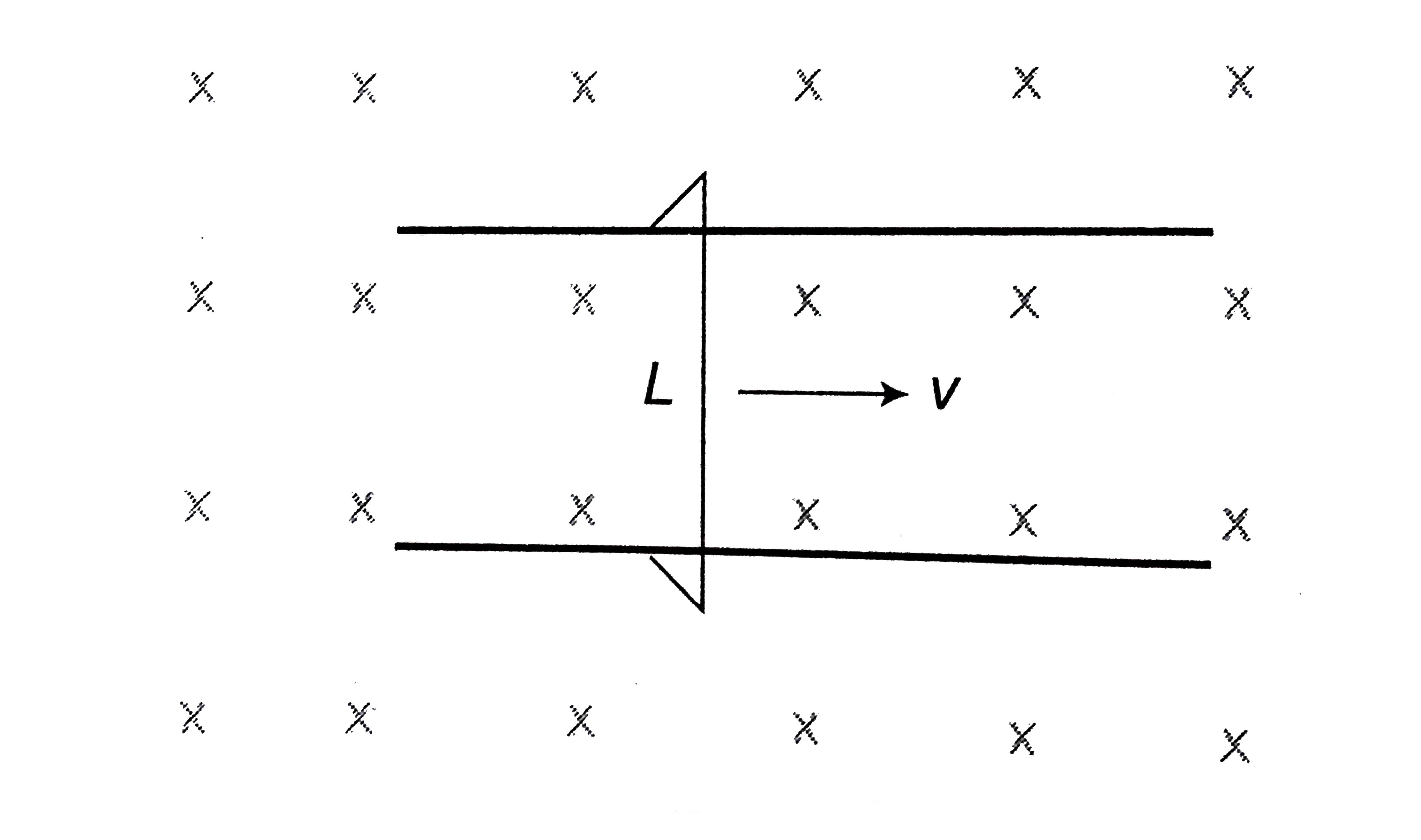 View Solution
View SolutionA conducting wire of length l and mass m can slide without friction on two parallel rails and is connected to capacitance C. The whole system lies in a magnetic field B and a constant force F is applied to the rod. Then
View SolutionA conducting wire of length l and mass m can slide without friction on two parallel rails and is connected to capacitance C. The whole system lies in amagnetic field B and a constant force F is applied to the rod . Then
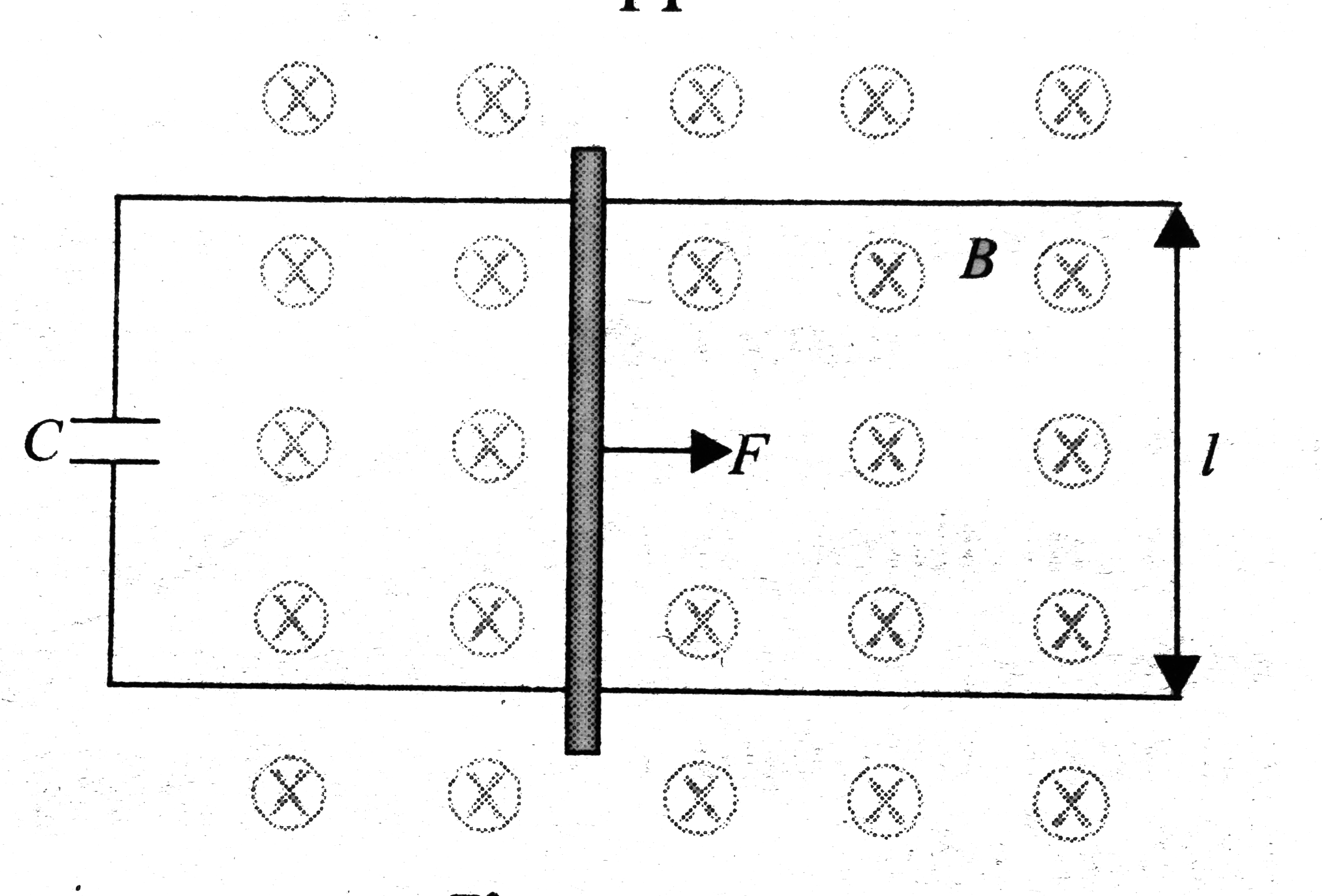 View Solution
View SolutionA resistance R is connected between the two ends of the parallel smooth conducting rails.A conducting rod lies on these fixed horizontal rails and a uniform constant magnetic field B exists perpendicular to the plane of the rails as shown in the figure.If the rod is given a velocity v and released as shown in figure, it will stop after some time, which option are correct:
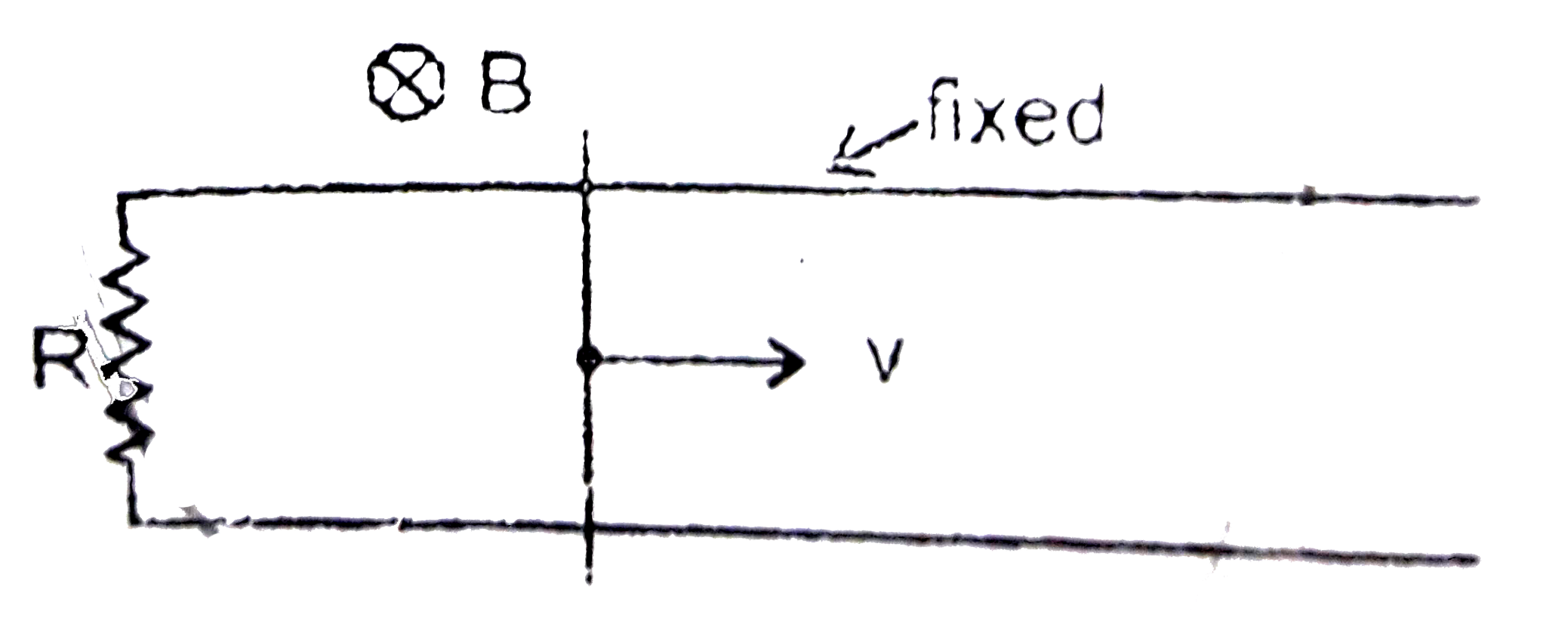 View Solution
View SolutionConsider parallel conducting rails separated by a distance l. There exists a uniform magnetic field B perpendicular to the plane of the rails as shown in Fig. Two conducting wires each of length l are placed so as to slide on parallel conducting rails. One of the wires is given a velocity v0 parallel to the rails. Till steady state is achieved, loss in kinetic energy of the system is
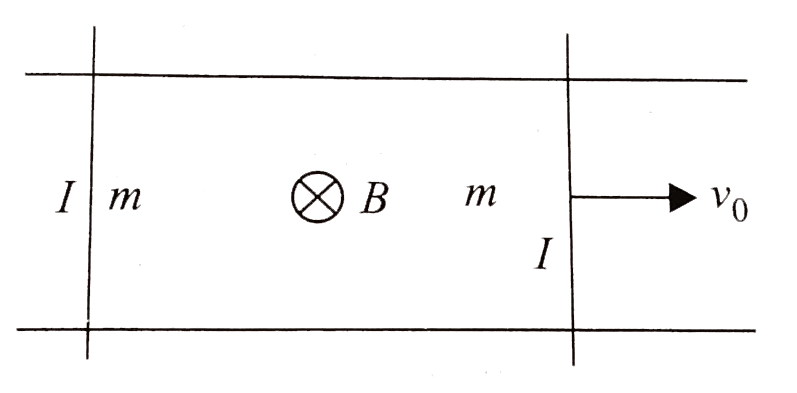 View Solution
View Solution
